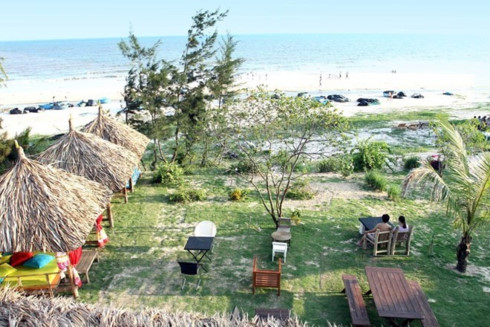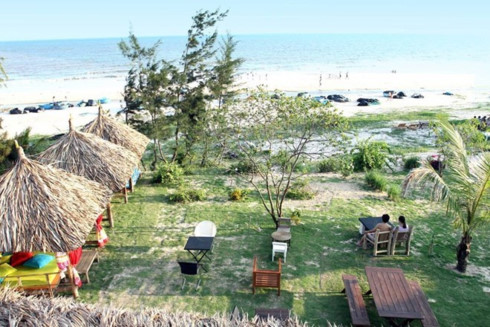
The south central coastal province of Binh Thuan aims to develop sustainable tourism to become a national and regional tourism attraction.

Apart from deploying measures to diversify tourism services,
enhance quality and promote its images, Binh Thuan focuses on boosting
cooperation and connectivity in tourism.
According to Director of the provincial
Department of Culture, Sports and Tourism Ngo Minh Chinh, the province will
continue to work with other localities, including Ho Chi Minh City, Lam Dong,
Hanoi, Can Tho to bring more domestic and international visitors to
destinations in Binh Thuan.
In addition, improving transport
infrastructure is an advantage for Binh Thuan’s tourism. The expanded National
Road 1A section running through the province was completed, the construction of
Phan Thiet airport and Vinh Tan port is undergone while the Dau Giay – Phan
Thiet highway building project will be launched.
According to Nguyen Duc Hoa, Vice Chairman of
the provincial People’s Committee, Binh Thuan is a key national tourism
destination, with tourism services including resorts, landscapes, sports,
spiritual tours and MICE tourism.
The sector contributed about seven percent to
provincial GRDP in 2016 and creates thousands of jobs, particularly in rural
and coastal areas.
Binh Thuan also has good conditions for
socio-economic and cultural exchanges with localities in the southeast, south
central and Central Highlands regions. The province also sits among southern
tourism hubs, namely Nha Trang in Khanh Hoa province, Da Lat in Lam Dong, HCM
City, Ba Ria – Vung Tau province.
It has
192 kilometres of
coast with beautiful beaches, landscapes, clean environment, national
historical – cultural relics and festivals.
Binh Thuan had by October had 390 tourism projects, worth
VND63.5 trillion (US$2.79 billion), covering
7,400 hectares.
It is home to more than 300 hotels, with
11,000 rooms and over 500 villas and apartments for tourists.
In 2016, the province received 4.5 million
tourists, including 300,000 foreigners.
It expects to welcome
around seven million tourists by 2020, contributing 10% to provincial GRDP.
Source: VOV
A diverse chain of eco-tourism and resort destinations concentrated in Hoa Binh city and the districts of Tan Lac, Da Bac, and Luong Son… Along with the launch of several key high-quality resort tourism projects, these developments have reshaped the landscape and enhanced the appeal of Hoa Binh as a travel destination.
Boasting diverse terrain, a mild climate, and rich natural resources, Cao Phong district is increasingly asserting its place on Vietnam’s tourism map, attracting both domestic and foreign visitors. The district is renowned for its stunning landscapes, majestic mountains, a crystal-clear hydropower lake, and the unique cultural identity of local ethnic groups.
With its pristine landscapes, unique cultural heritage of Muong ethnic minority, and an expanding range of visitor experiences, Tan Lac district of Hoa Binh has fast become a captivating destination for both domestic and international tourists.
Until now, Sung village in Cao Son commune, Da Bac district remains the only Dao ethnic community in Hoa Binh province to develop a community-based tourism model. Beyond its untouched natural landscapes, cultural identity serves as the cornerstone attraction for visitors.
Alongside the diverse cultural identities of the Kinh, Muong, Tay, Thai, Dao, and Mong ethnic people, Hoa Binh province is also renowned as the "capital" of the northwestern Vietnamese cuisine, offering unique and distinctive dishes. At festivals, during Lunar New Year (Tet), or on significant family or community occasions, special dishes are prepared, leaving a lasting impression on visitors.
A Phong Linh (Yellow Tabebuia) flower garden in Thang village, Thach Yen commune, Cao Phong district is currently in full bloom, drawing a large number of visitors.



